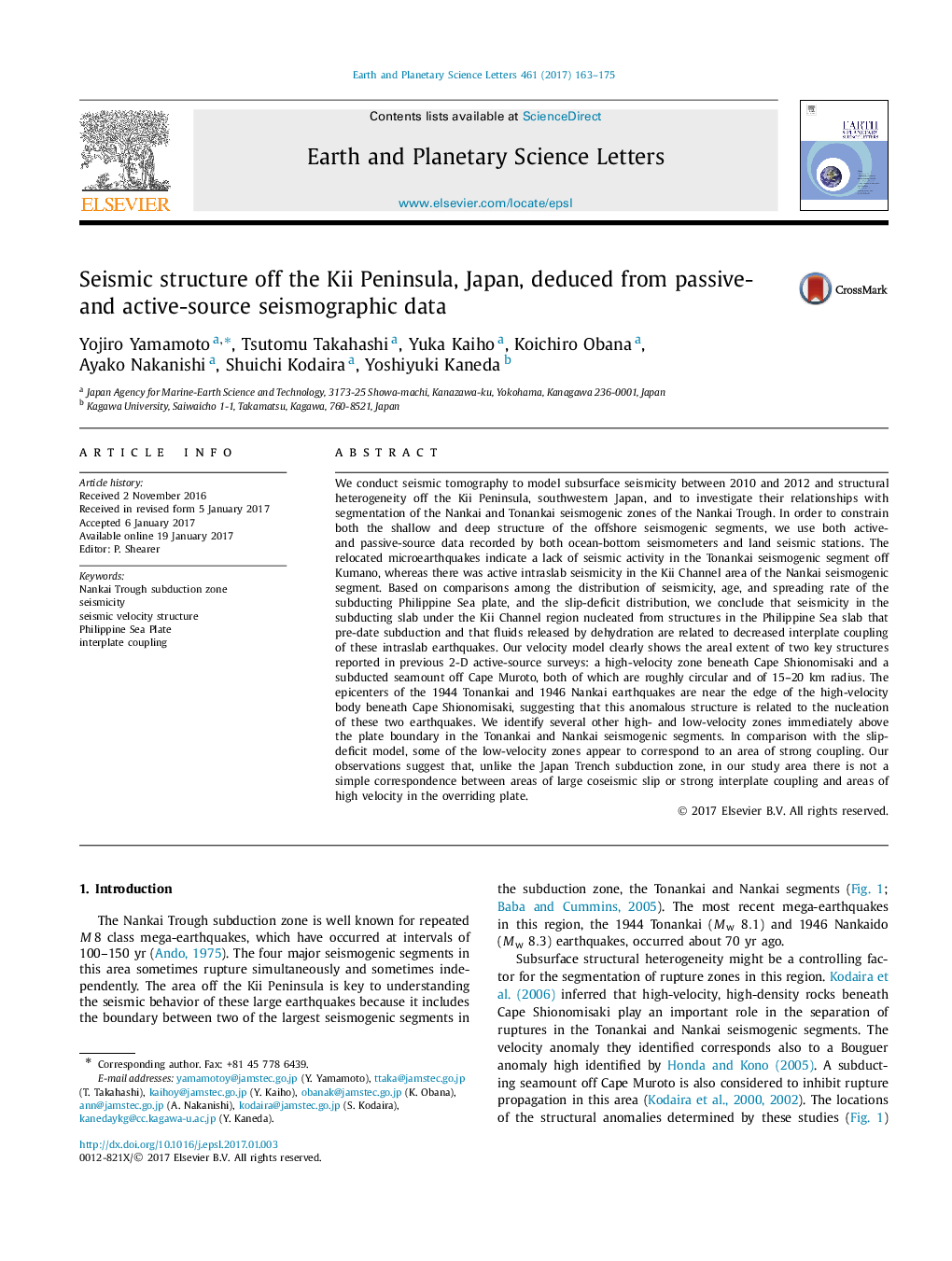| کد مقاله | کد نشریه | سال انتشار | مقاله انگلیسی | نسخه تمام متن |
|---|---|---|---|---|
| 5779807 | 1634695 | 2017 | 13 صفحه PDF | دانلود رایگان |
- Identified an intraslab seismic activity beneath the Kii channel region.
- Intraslab seismic activity is related to age and spreading rate of subducting plate.
- Epicenters of recent large earthquakes are near the edge of a high-velocity body.
- Subducted seamount off Cape Muroto has an areal extent of about 15-20 km.
- Velocity patterns do not constrain interplate coupling or coseismic slip distribution.
We conduct seismic tomography to model subsurface seismicity between 2010 and 2012 and structural heterogeneity off the Kii Peninsula, southwestern Japan, and to investigate their relationships with segmentation of the Nankai and Tonankai seismogenic zones of the Nankai Trough. In order to constrain both the shallow and deep structure of the offshore seismogenic segments, we use both active- and passive-source data recorded by both ocean-bottom seismometers and land seismic stations. The relocated microearthquakes indicate a lack of seismic activity in the Tonankai seismogenic segment off Kumano, whereas there was active intraslab seismicity in the Kii Channel area of the Nankai seismogenic segment. Based on comparisons among the distribution of seismicity, age, and spreading rate of the subducting Philippine Sea plate, and the slip-deficit distribution, we conclude that seismicity in the subducting slab under the Kii Channel region nucleated from structures in the Philippine Sea slab that pre-date subduction and that fluids released by dehydration are related to decreased interplate coupling of these intraslab earthquakes. Our velocity model clearly shows the areal extent of two key structures reported in previous 2-D active-source surveys: a high-velocity zone beneath Cape Shionomisaki and a subducted seamount off Cape Muroto, both of which are roughly circular and of 15-20 km radius. The epicenters of the 1944 Tonankai and 1946 Nankai earthquakes are near the edge of the high-velocity body beneath Cape Shionomisaki, suggesting that this anomalous structure is related to the nucleation of these two earthquakes. We identify several other high- and low-velocity zones immediately above the plate boundary in the Tonankai and Nankai seismogenic segments. In comparison with the slip-deficit model, some of the low-velocity zones appear to correspond to an area of strong coupling. Our observations suggest that, unlike the Japan Trench subduction zone, in our study area there is not a simple correspondence between areas of large coseismic slip or strong interplate coupling and areas of high velocity in the overriding plate.
Journal: Earth and Planetary Science Letters - Volume 461, 1 March 2017, Pages 163-175
